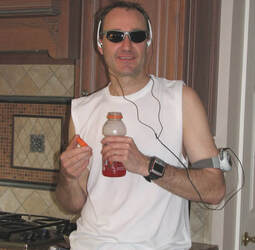 As I'm sure you all have noticed, the temperatures have been climbing over the last few weeks. While with the warmer weather can be invigorating, it can also make running more challenging. Over the next couple of days, I'll talk about what happens to your body when exercising in hot and humid conditions, some tips to make summer training a little easier, and ways to adjust your paces based off of the conditions. Why is running in the heat so hard?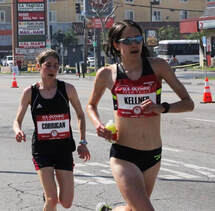 A hot day at the 2016 Olympic Marathon Trials A hot day at the 2016 Olympic Marathon Trials It is obvious by the splits on our watch and the excessive sweat on our shirts that we strain more when running in the heat, but why is this so? When one's temperature rises to an uncomfortable level, the body has two methods to try to cool itself. First, blood, which carries heat, is redirected to the surface of the skin. This allows the blood to dissipate that heat to the surroundings. While this has a cooling effect, it also means that less blood is flowing to the working muscles, so these organs get less oxygen. Thus, the same workload will require more energy than running in cooler temperatures. Second, the body tries to cool Itself by sweating. When sweat evaporates from the skin, it has a cooling effect. Unfortunately, high humidity, which indicates high moisture in the air, makes evaporation more difficult and sweating less efficient as a cooling mechanism. Can I get fitter by running in the heat?Heat acclimatization is it true phenomenon! In fact, heat training has been called the "poor man's altitude training". Both heat training and altitude training have similar effects on the body. When one goes up to altitude, there is less oxygen in the air. Therefore, the blood carries less oxygen to the working muscles. Over time, the body increases its blood volume so that it can transport more oxygen at one time. Similarly, with heat training, blood is redirected to the surface of the skin to facilitate cooling. In this process, less blood is able to carry oxygen to the muscles. To adapt to the heat, the body increases its volume of blood so it can bring more oxygen to the muscles. Therefore, both altitude training and heat training increase blood volume to facilitate oxygen transport. Different types of training, but similar results! How do I adjust my paces in warmer conditions?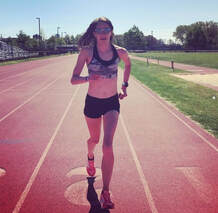 I get a lot of questions about whether or not it is appropriate to adjust training paces on hot days and if so, how to do this properly. It isn't as straightforward as it sounds, since temperature, humidity, and amount of sun all play into the equation. Truthfully, my favorite method is to go by effort rather than pace. Since you all have been practicing sticking to your goal paces during workouts (right!?!) you should have a sense of what each type of run should feel like effort-wise. However, I know many runners are "numbers people" and having a specific formula can help see if you are on the right track. My favorite formula comes from coach Mark Hadley of Maximum Running Performance. He suggests calculating the number of degrees above 60 it is outside. Let's say it is 83 degrees, so that would be 23. Then, add 5 to 10 degrees if it is humid out. We will add 7 for a decently humid day and make our new total 30. Multiply this number by 0.15% which is 4.5%. Therefore, we would increase our pace by 4.5% given these conditions. For example, 8:00 would become 8:22 pace. How do I prepare for a hot race? Perhaps you are preparing for a race where you know it is going to be hotter than it is now. The race maybe later in the summer or in a location with a much warmer climate than where you live. In order to perform your best, you should aim to begin the heat acclimation process during your training. This can be done by running in extra clothing, spending some time in a sauna (sometimes I just use my hot car, haha, but there's no science backing that) or running at the warmest time of day. In 2016, I prepared for the Olympic Marathon Trials by running in long sleeves and tights in Florida. Race day ended up being unseasonably warm and heat training paid off big time. Only use these methods if it is not already warm where you live. You shouldn't further stress your body when it is already very hot out! Tips for training in the heat:1. Stay hydratedStaying hydrated is the best way to beat the heat. The more hydrated one is, the more they can sweat. I recommend carrying a water bottle around with you throughout the day. Having water near you increases the likelihood of drinking at moments you otherwise would not have. One test to see if you are hydrated enough is to look at your urine. If you are drinking enough, it should be close to clear! I usually only drink water to hydrate throughout the day/pre-run and focus on getting in the electrolytes post-run. If I am feeling particularly sluggish or have a big race the next day, I may add in some electrolytes. 2. Hydrate during the run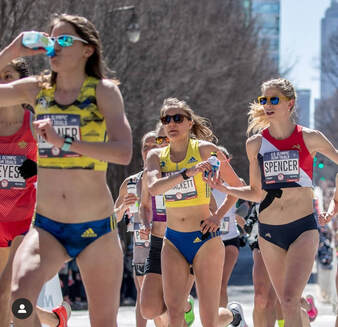 Taking in some fluid while running, especially during tempos and long runs, can make a big difference in both how you feel and how fast you are able to run. Carrying fluid may initially seem irritating, but Nathan makes some great handheld water bottles. I swear, I forget that I'm holding it most of the time. I usually carry water when I'm running, so I have the option to pour some on my head, but an electrolyte solution is also appropriate. During these runs, I am focusing on hydration, rather than fueling. If you are racing or practicing fueling for race day, you should drink something with both electrolytes and simple sugars and aim to get in 100-200 calories every 30-45 minutes. If you are just trying to feel better during a hot run, you can worry about refueling when you are finished.
0 Comments
|
Archives
November 2020
Categories |

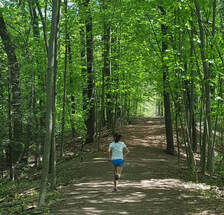
 RSS Feed
RSS Feed